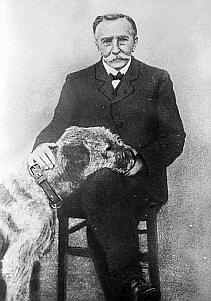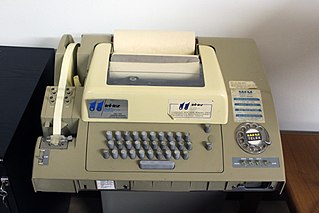Bell Telephone Manufacturing Company


The Bell Telephone Manufacturing Company (BTMC) was founded on 26 April 1882 as the principal manufacturing business to assist International Bell with its growth throughout Europe, where many countries had nationalistic trade policies favouring domestic suppliers. BTMC was owned 45% by the American Bell Telephone Company, and 55% by Bell's major U.S. supplier, Western Electric, of which Bell was also a majority stakeholder. Western Electric, a U.S. company formed during the era of the telegraph, became American Bell's sole telephone supplier the same year. In a share sale to Western Electric, American Bell later disposed of its ownership of BTMC in 1890 to concentrate on telephone system operations, but since American Bell had been Western Electric's majority shareholder since 1881 it maintained an indirect ownership of IBTC. [6]
The IBTC was created for "...the production, sale, purchase and leasing of equipment for telephony and telegraphy and everything directly or indirectly related to electricity" [1] [6] Later, as demand for services bloomed, the Bell Telephone Company had insufficient operating funds to quickly increase the telephone exchange network, resulting in Western Electric buying out all 45% of the shares held by Bell in 1890. [1]
Ezra Gilliland of Western Electric helped establish the manufacturing arm, at which point a young university educated, multilingual American, Francis R. Welles, took over its leadership, with the title of "Administrateur Delegue". [2] Francis Raymond Welles (b. Athens, Pa., August 18, 1854 – d. Vernet-Les-Bains, France, December 14, 1936), graduated the University of Rochester with an Accelerated bachelor's degree (A.B.) in 1875, and a year later started work as secretary to Enos M. Barton, a co-founder of Western Electric. Barton had earlier sent him to Australia and New Zealand to help with operations there, and Welles was then transferred to Brussels. [7] Welles would lead the overseas BTMC company for the next 30 years assisted by Louis De Groof, a Belgian authorised agent. [1] [5] [6]
IBTC started up subsidiary manufacturing plants in major cities throughout all of Europe, since nationalistic policies favoured local manufacturers. [2] In the year after its founding BTMC employed 35 people, and its workshops were accommodated within a small plant at No. 4 Boudewijnstraat, Antwerp. [1] Its factory was completely rebuilt after a fire in 1882, and by 1885, the Bell Antwerp facility had completed its conversion from importing telephones and switchboards from the U.S., to local manufacturing, with production more than doubling annually as BTMC began to supply their other divisions throughout Europe. By 1900, BTMC was also its new parent's (AT&T) main supplier of telephone systems to Asia, the Middle East and South America, and the facility had increased to a staff of 700 operating from a greatly expanded plant. [1] [6]
The Antwerp facility was largely responsible for introducing the telephone to much of Europe, with its first manual and rotary dial telephone exchanges. In 1884 the very first European intercity line was created between Antwerp and Brussels, and in 1887 the first international line in Europe was opened between Brussels and Paris. [1]
By the end of the nineteenth century European governments moved to nationalize their phone companies, and the telephone service concessions of la Compagnie Belge du Téléphone Bell were allowed to expire or were purchased by the Belgian government. [1]
Francis Welles retired from BTMC in 1913 and returned to the United States shortly before the First World War. Welles and was succeeded by Alexis Mois. The Great War inflicted severe damage to BTMC's operations and production facilities, much of which was destroyed or seized by the invading German army. The company's U.S. managers immediately departed for the United Kingdom or returned home, while many plant employees had been seconded to the Belgian army, or moved to other unoccupied countries. Western Electric's head office contact and control of the company was lost for the duration of the war and almost all engineering development and manufacturing there stopped for the remainder of the war. [6]
In its early existence the Bell Telephone Manufacturing Company of Belgium took on the role of a child of two often squabbling parents, Western Electric and the American Bell Telephone Company (later to become AT&T). Sired by Bell Telephone's Hubbard and Vail it would become the custody of Western Electric through share purchase, which then nurtured and raised it only to see its Belgian concession reclaimed by a nationalistic government. However even through a succession of owners the BTMC has retained its original name, even to the present day. [6] It is currently a unit of Nokia Corporation by the name of Nokia Bell NV.[ citation needed ]












